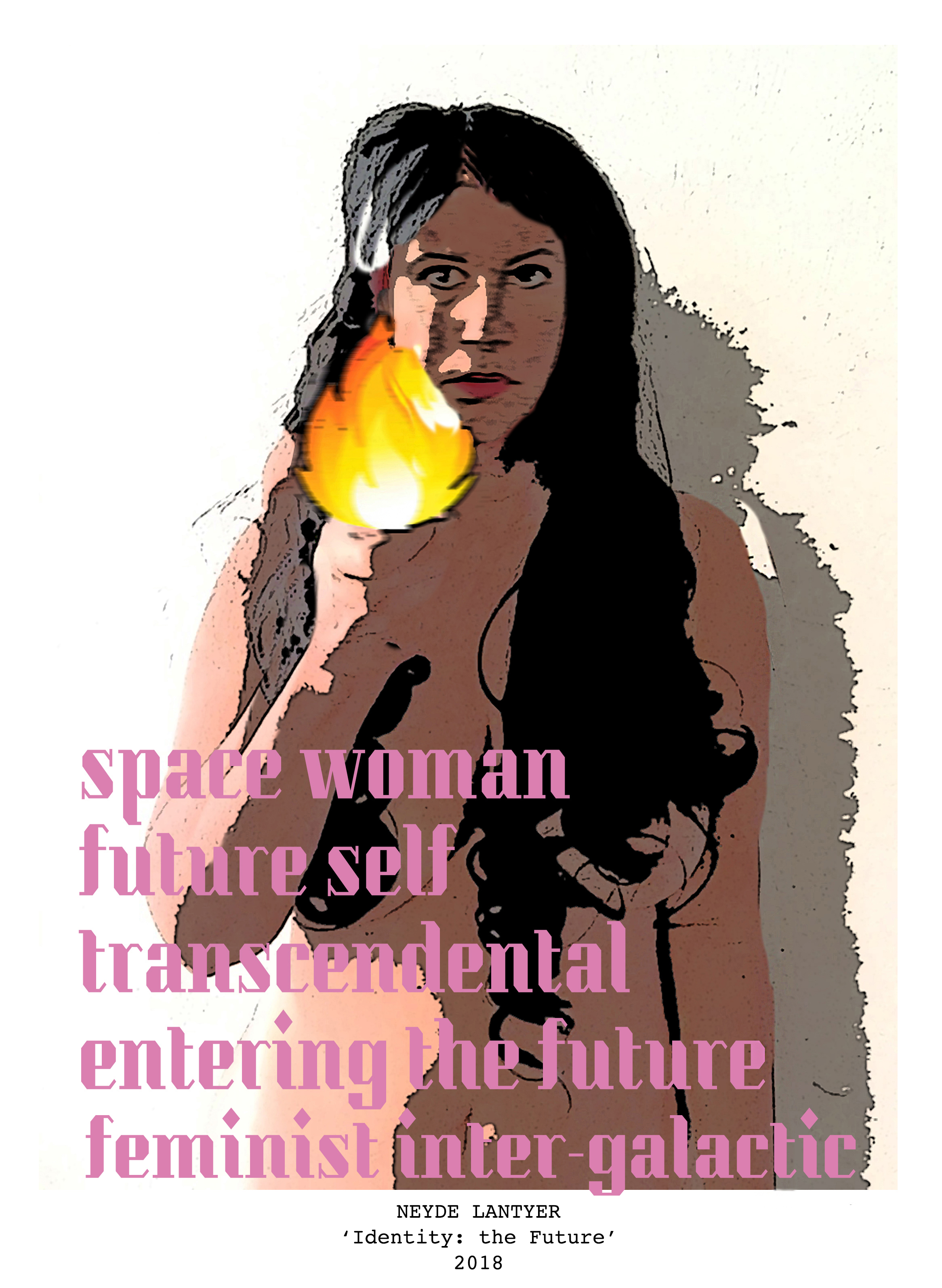Posters / Screen print
Dimensions: A0 each
In The Women Body in Transit / School of Critics
Studio K
Amsterdam, 2018



ABOUT THE WORK:
The female body is ascribed different meanings at different geographies and historical periods. It self-identifies also differently. Women of colour or, in the Netherlands, niet-Westerse allochtone vrouwen, experience their bodies in a range of ways in their travels between their countries of birth or of the country of their (grand) parents and the Netherlands.
The very same female body might be perceived (and objectified) as non-Western exotic in the Netherlands and as Western and foreign where one has her cultural heritage. The same woman is perceived and categorized as Black somewhere and as non-Black or white elsewhere.
This mashing of race/ethnicity and gender translates in the way women traverse space, negotiate (national) belonging and assert agency under hospitable and inhospitable conditions. She will refer to an experience of strangeness in one’s female body that becomes familiar to a women of colour, and however never fully comfortable, turns into her repertoire of being in the world as an embodied female experience.
Women of colour reinvent themselves continuously: in transit, in misplacement, in cultural strangeness, in relation to the other and in an endless struggle to fit and belong. Female bodies are living cultural and political battlegrounds, social archives, working force and fields for aesthetic (sexual and artistic) fantasies. Therefore, we believe that it is relevant to reflect artistically upon this very body in the month when we celebrate Women’s Day, reinforcing artistic activism and addressing (cultural) power structures.
Text by Patricia Schor and Neyde Lantyer
__________
“The Female body in Transit Project”, School of Critics / Studio K, Amsterdam, Exhibition view.
![]()
![]()
![]()
The very same female body might be perceived (and objectified) as non-Western exotic in the Netherlands and as Western and foreign where one has her cultural heritage. The same woman is perceived and categorized as Black somewhere and as non-Black or white elsewhere.
This mashing of race/ethnicity and gender translates in the way women traverse space, negotiate (national) belonging and assert agency under hospitable and inhospitable conditions. She will refer to an experience of strangeness in one’s female body that becomes familiar to a women of colour, and however never fully comfortable, turns into her repertoire of being in the world as an embodied female experience.
Women of colour reinvent themselves continuously: in transit, in misplacement, in cultural strangeness, in relation to the other and in an endless struggle to fit and belong. Female bodies are living cultural and political battlegrounds, social archives, working force and fields for aesthetic (sexual and artistic) fantasies. Therefore, we believe that it is relevant to reflect artistically upon this very body in the month when we celebrate Women’s Day, reinforcing artistic activism and addressing (cultural) power structures.
Text by Patricia Schor and Neyde Lantyer
__________
“The Female body in Transit Project”, School of Critics / Studio K, Amsterdam, Exhibition view.


